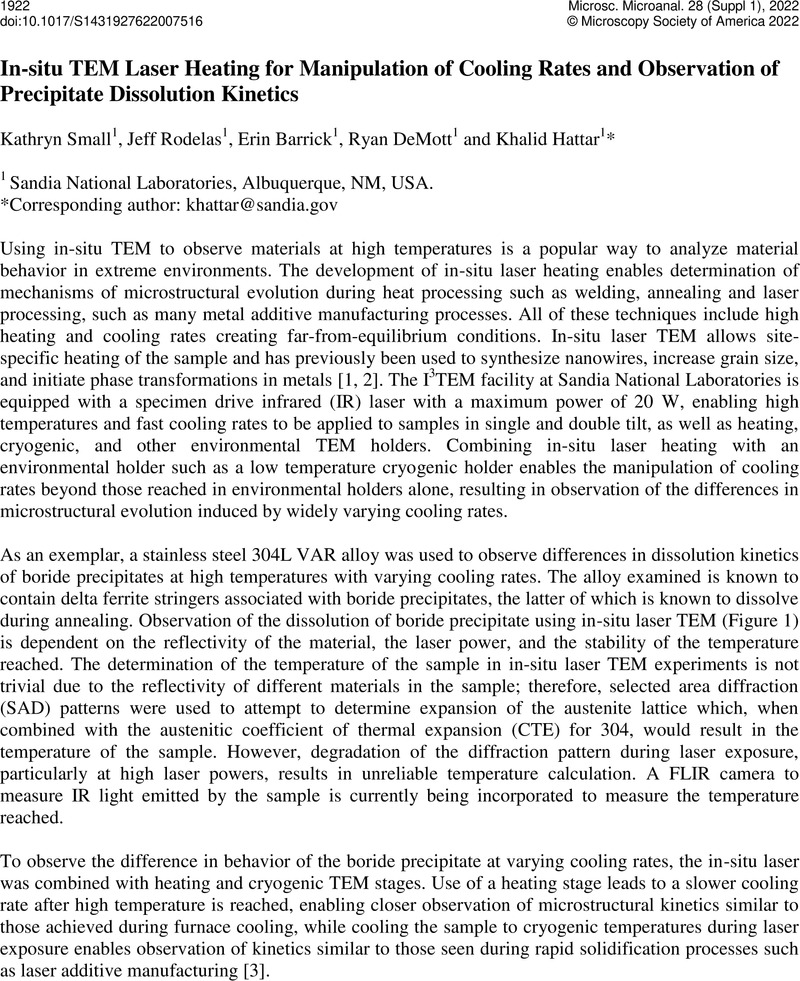The authors would like to acknowledge Daniel Perry and Damion Cummings at Sandia National Laboratories for preparation of FIB lift-outs used in the above experiments. Shen Dillon and Keith Coffman are gratefully acknowledged for use of their strain calculation MATLAB code. This work was performed, in part, at the Center for Integrated Nanotechnologies, an Office of Science User Facility operated for the U.S. Department of Energy (DOE) Office of Science. Sandia National Laboratories is a multimission laboratory managed and operated by National Technology & Engineering Solutions of Sandia, LLC, a wholly owned subsidiary of Honeywell International, Inc., for the U.S. DOE's National Nuclear Security Administration under contract DE-NA-0003525. The views expressed in the article do not necessarily represent the views of the U.S. DOE or the United States Government.
Google Scholar